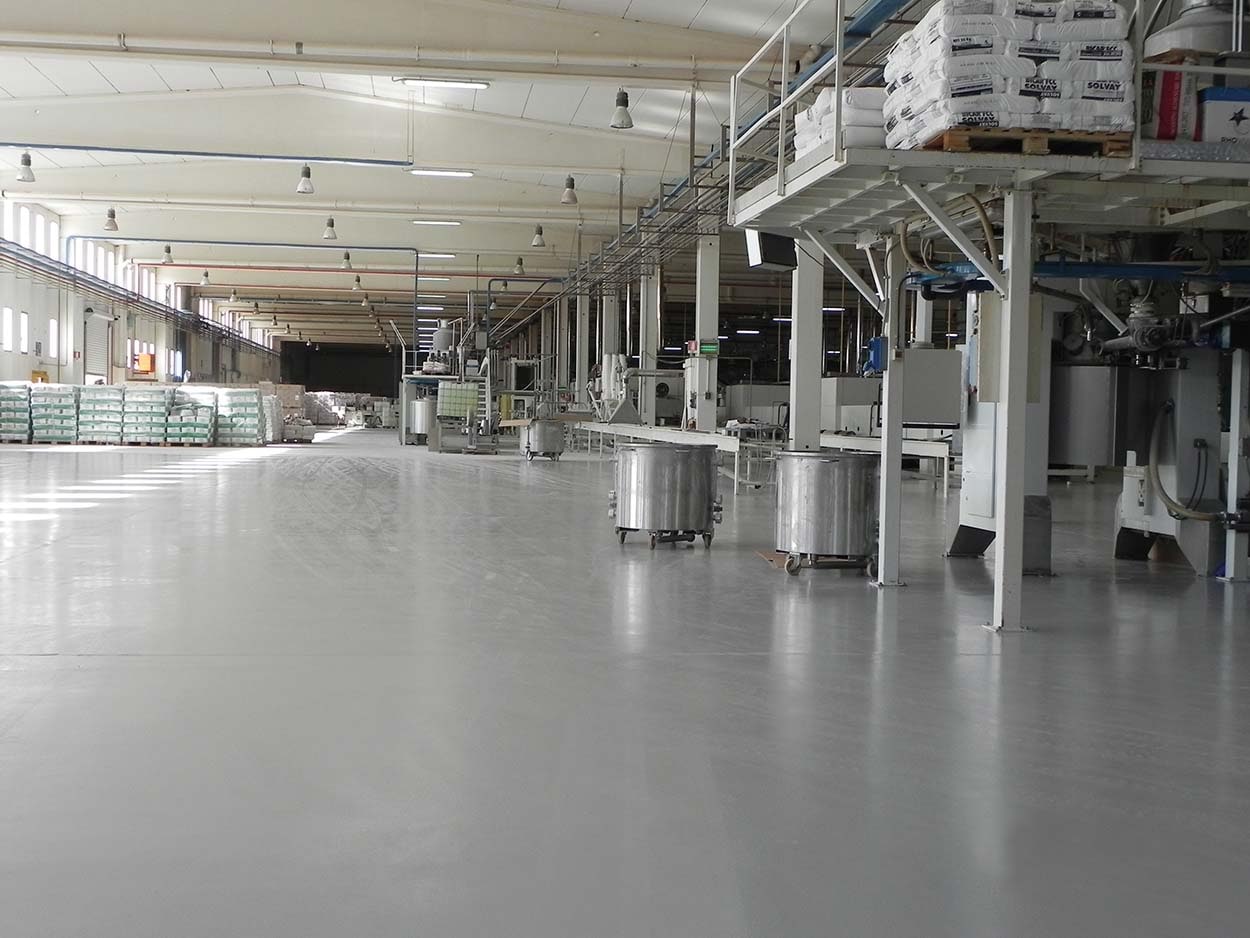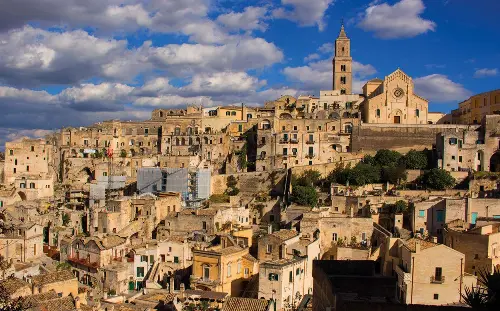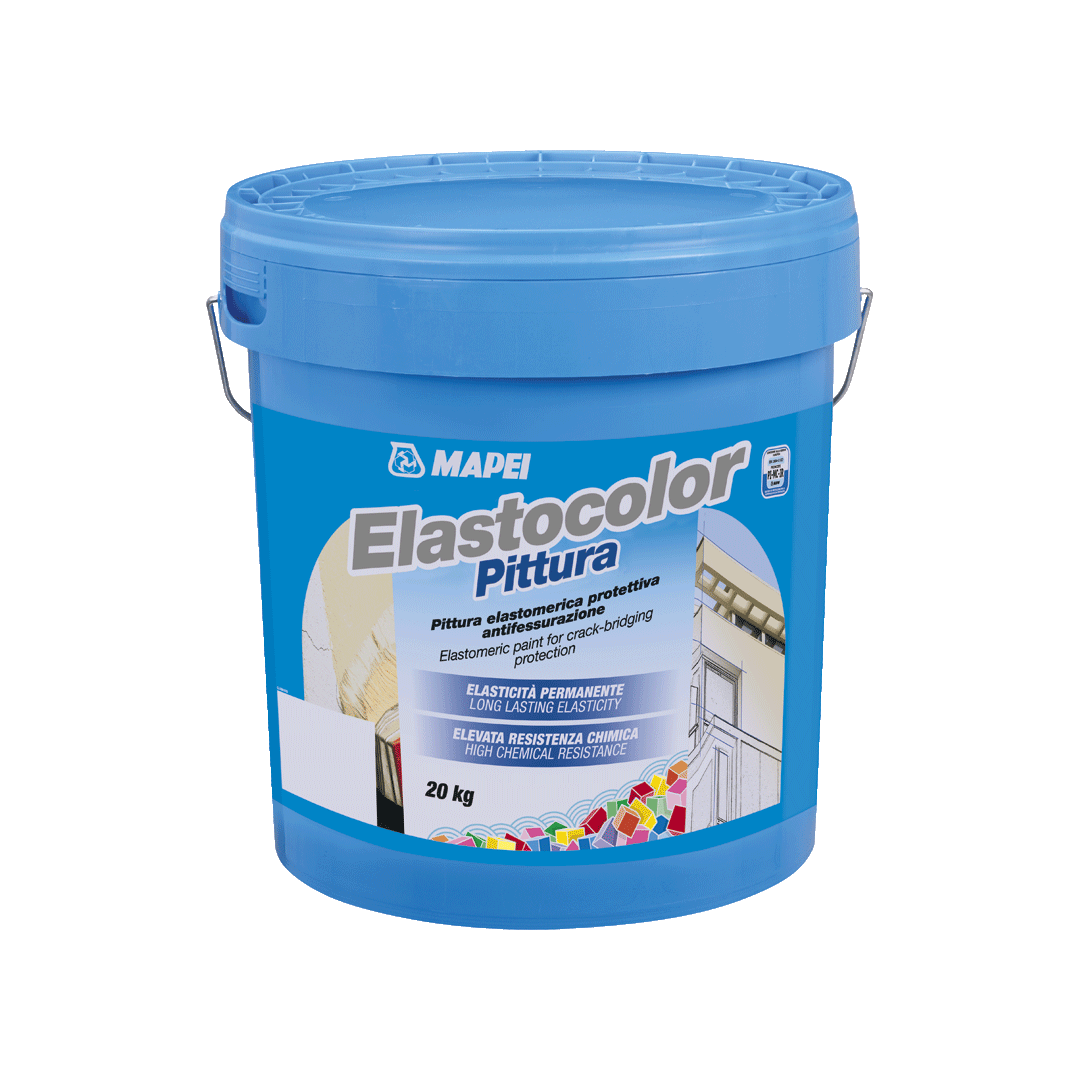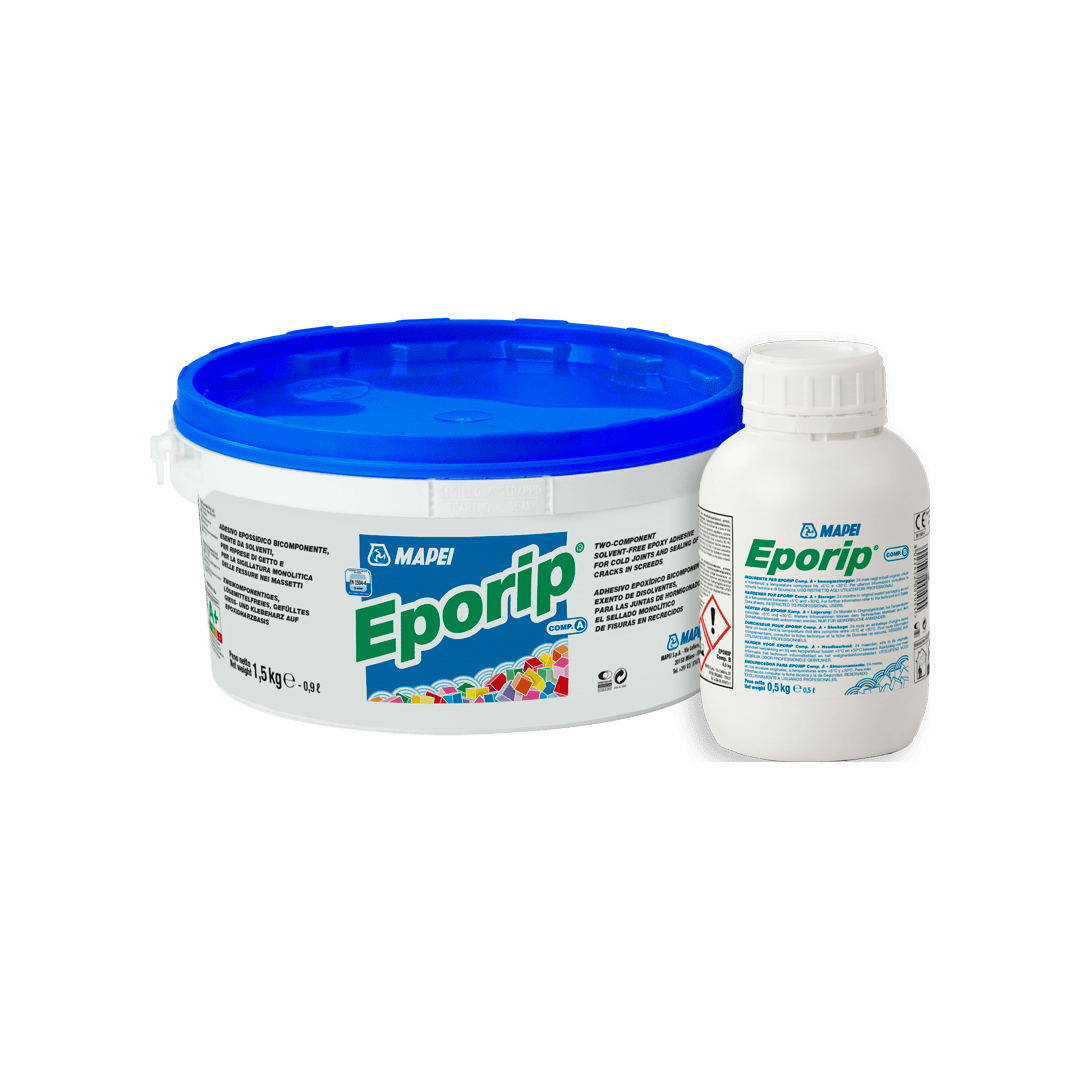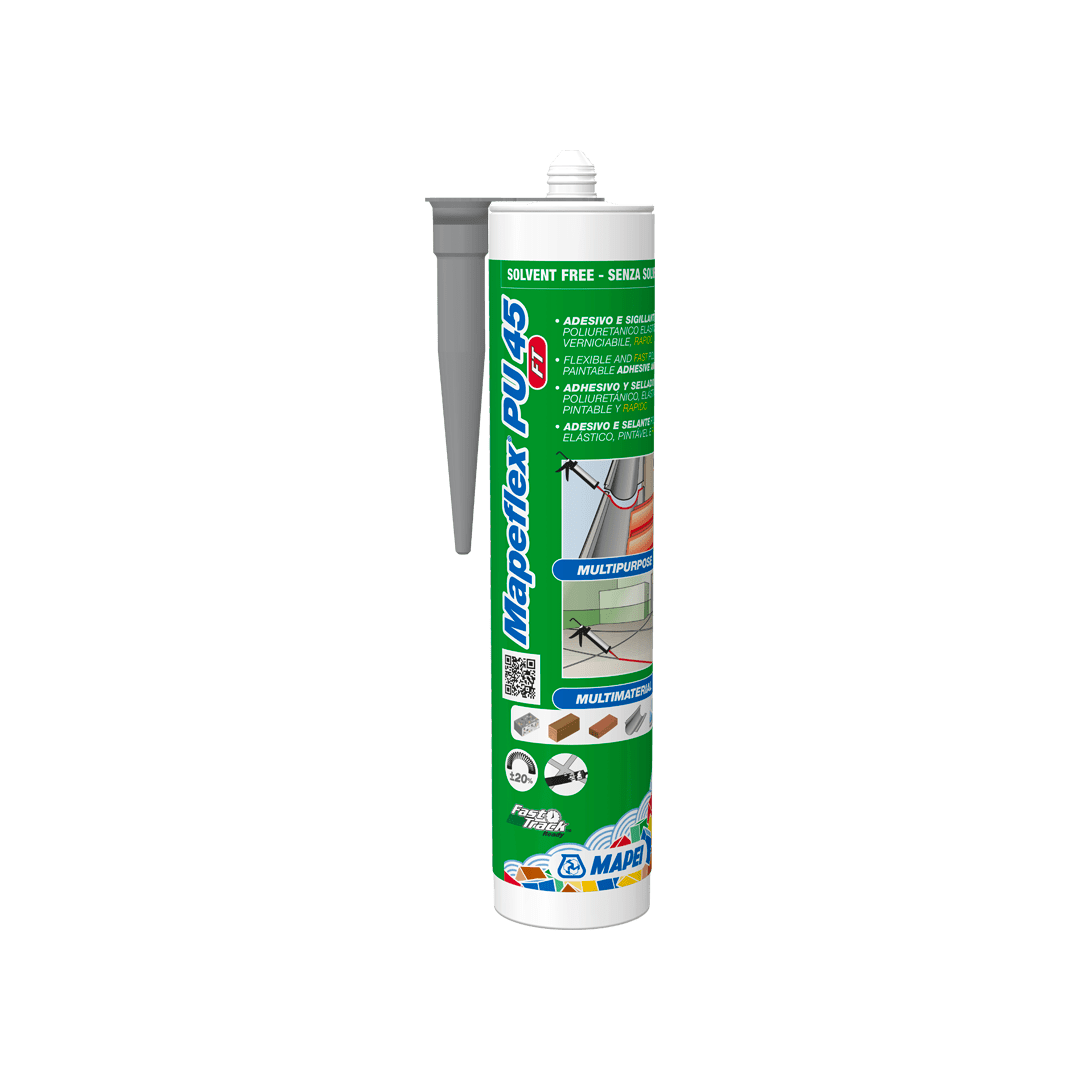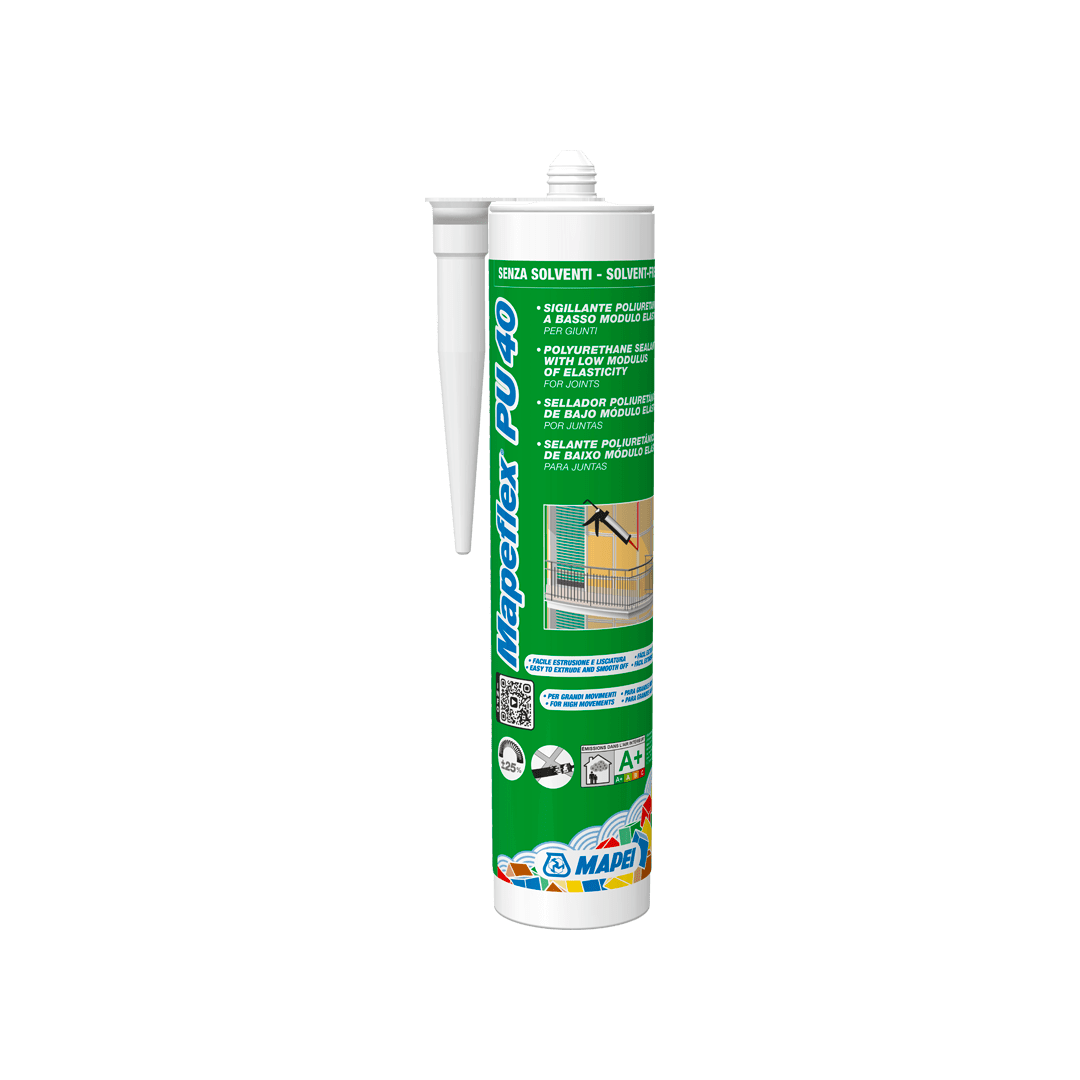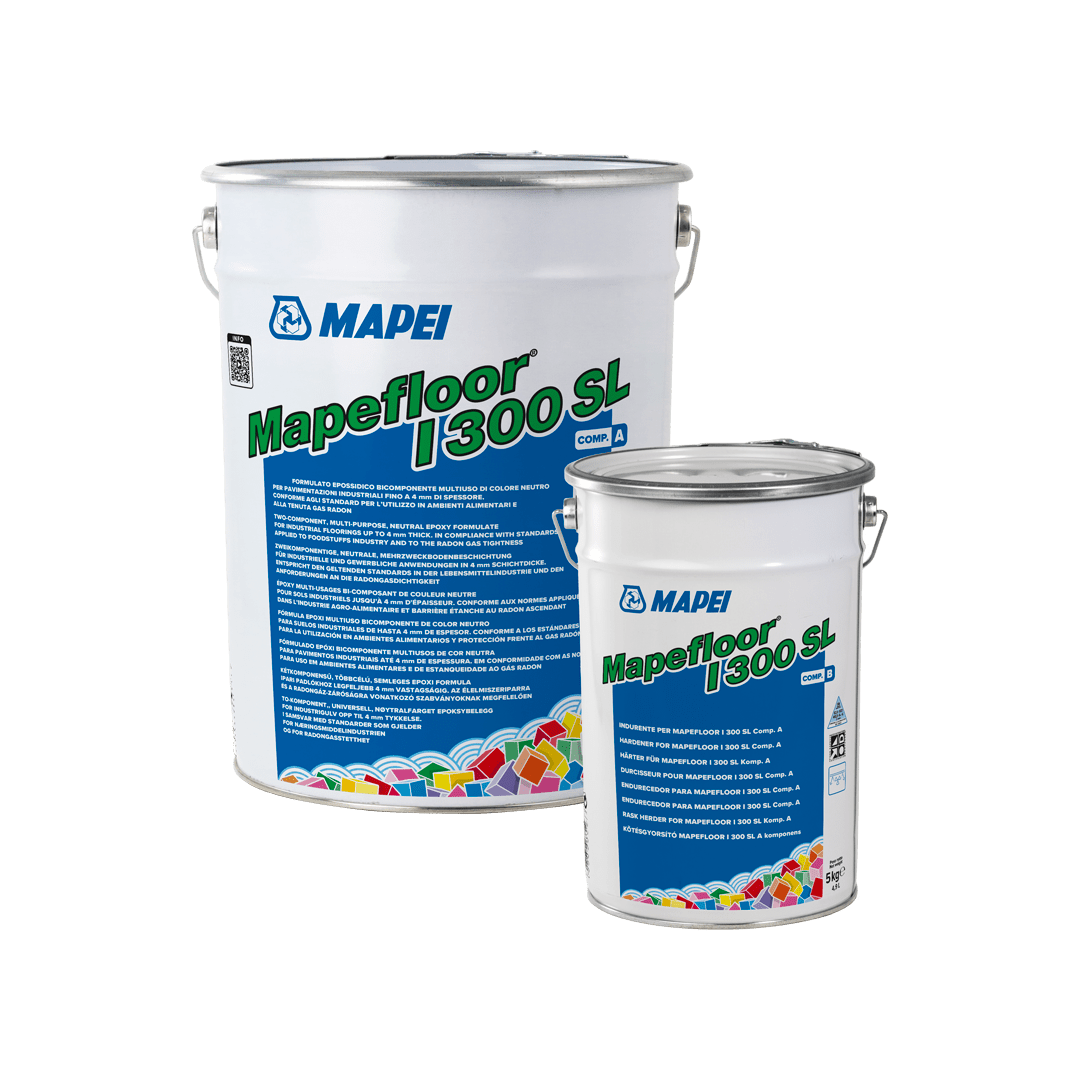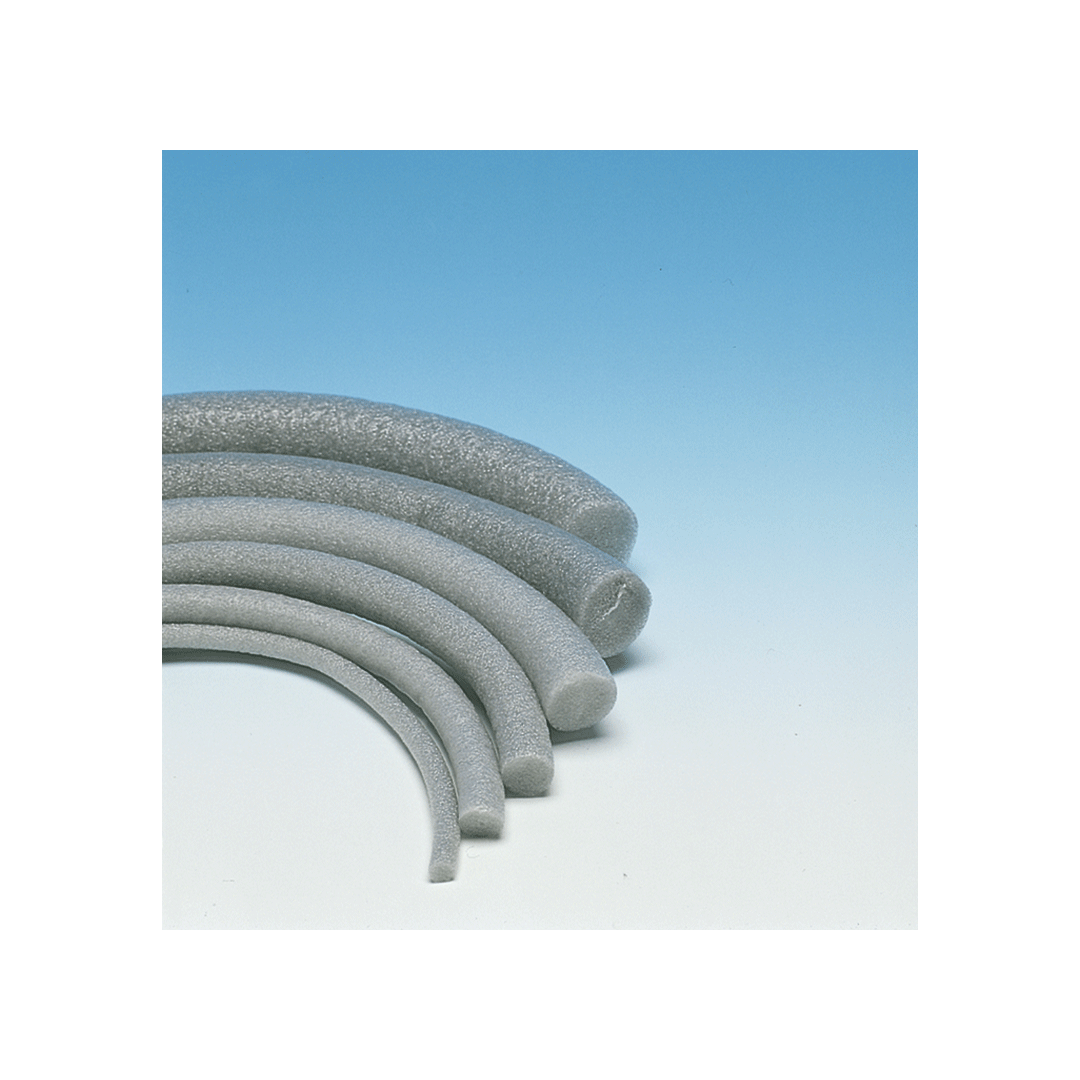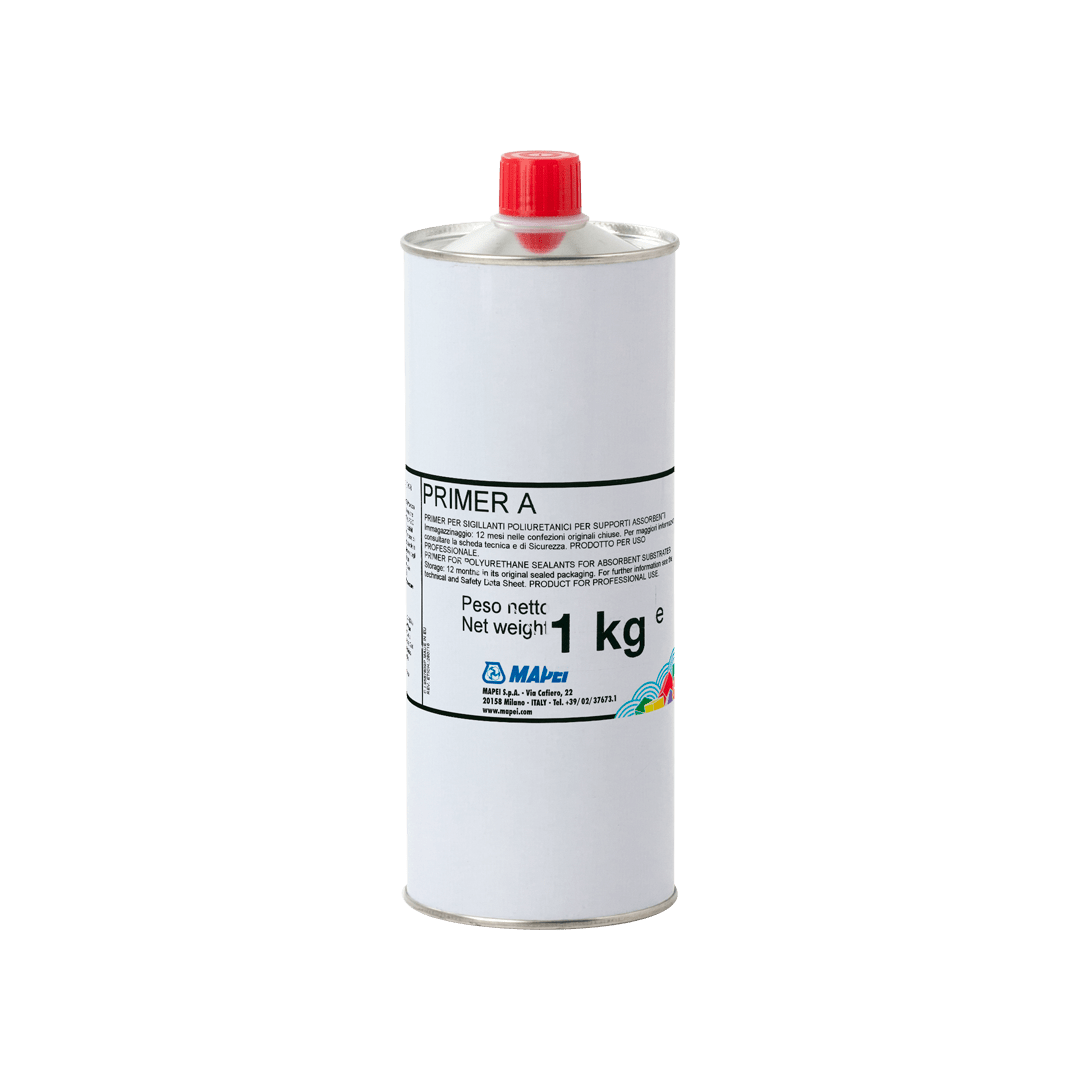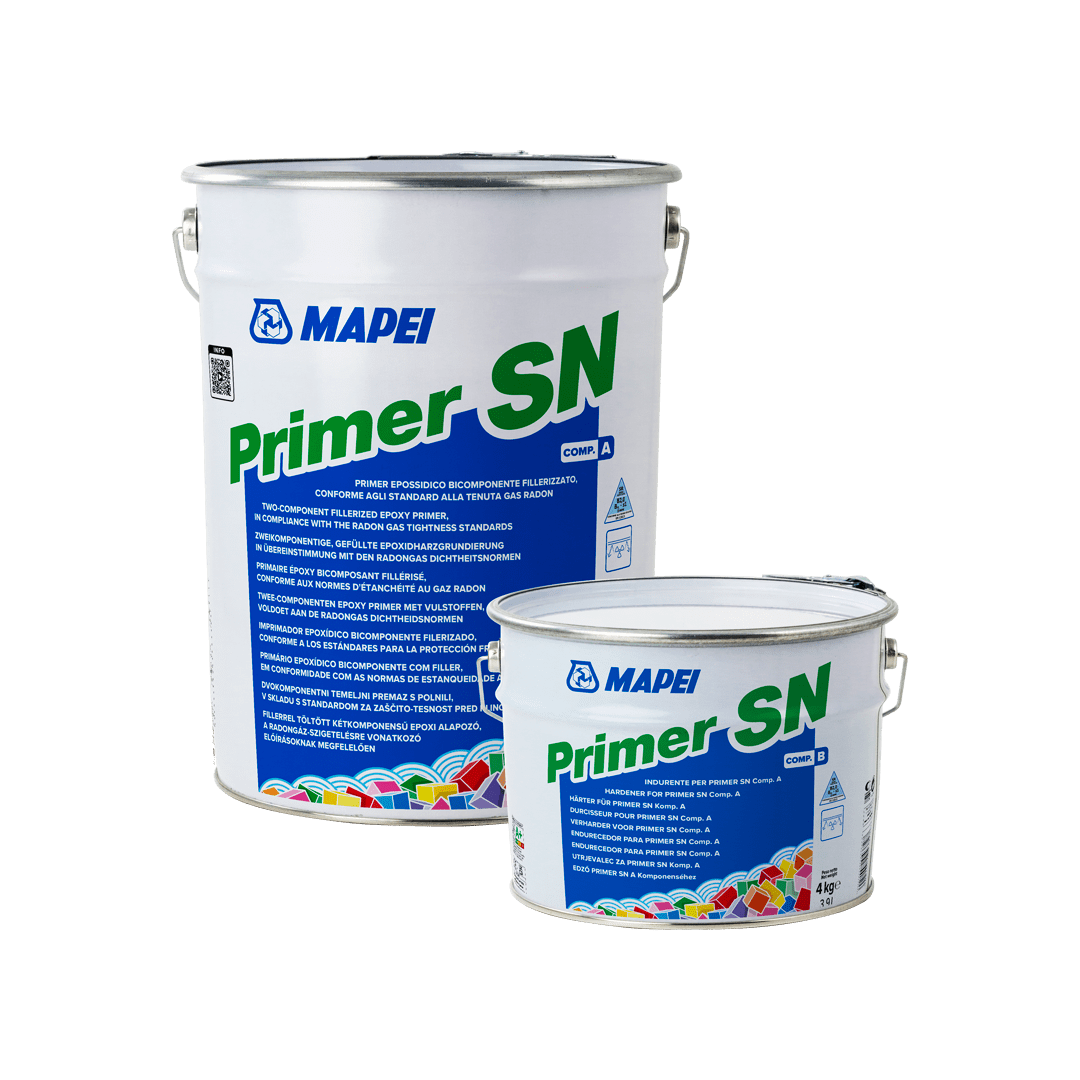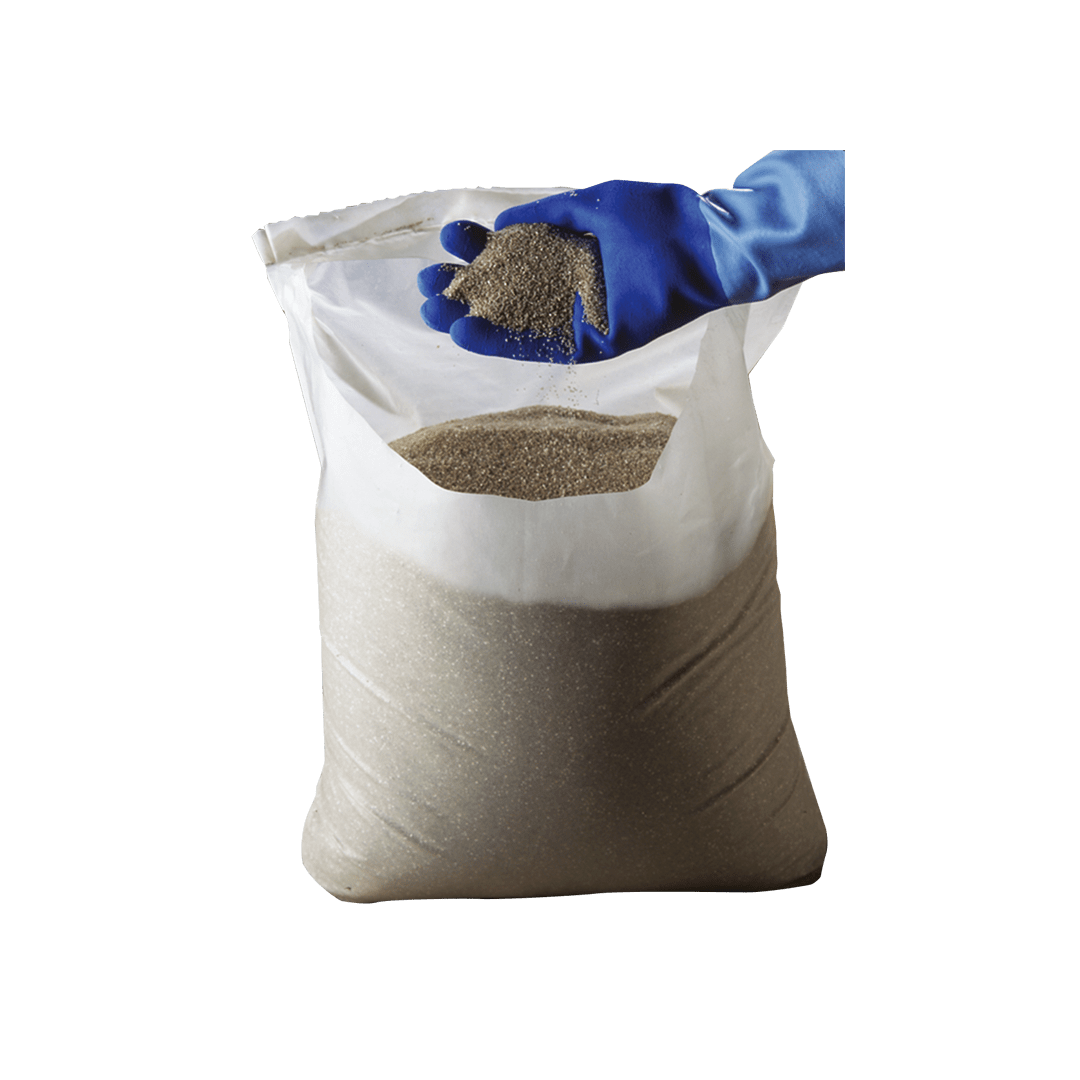
Di Leo biscuit production unit in Matera
Concrete repair, new floors and coatings for a cutting-edge facility.
The story of the Di Leo biscuit manufacturing facility started more than 150 years ago, in 1860, when the Di Leo bakery was founded in Altamura (Southern Italy), with the intention to just bake bread made by the local families. In the 1930’s they then started actually making and selling their own bread. In the 1950’s and 60’s, apart from making bread, the company also started making biscuits and, in the 1990’s, the bakery moved to new premises equipped with high quality machineries and materials in the industrial area of Matera.
The story of the Di Leo biscuit manufacturing facility started more than 150 years ago, in 1860, when the Di Leo bakery was founded in Altamura (Southern Italy), with the intention to just bake bread made by the local families. In the 1930’s they then started actually making and selling their own bread. In the 1950’s and 60’s, apart from making bread, the company also started making biscuits and, in the 1990’s, the bakery moved to new premises equipped with high quality machineries and materials in the industrial area of Matera. Apart from making their own brand biscuits, the company, which in the meantime had changed its name to Di Leo SpA, also started supplying other important food companies.
Since then, the manufacturing facility in Matera has been making and selling a wide range of baked products, from traditional biscuits to shortbread with important nutritional properties.
Di Leo is currently the eighth most important brand of biscuits in Italy in terms of sales and volume and has been awarded ISO 22000 – ISO 14001 – IFS certifications in recognition of the quality of the company structure.
It is also one of the first companies in southern Italy to have obtained a category A award from BRC Global Standard Food, the highest level achievable from this prestigious British quality certification protocol for the food industry.
THE IMPORTANCE OF BEING RESPONSIBLE
Di Leo has always believed it is important to be actively involved in society through various projects and enterprises. Ever since 2014, when Matera first decided to make a bid to be one of the 2019 European Capitals of Culture, the Di Leo company has backed the bid by joining the Matera 2019 Committee, which has promoted the planning and organisation of a series of events supporting the project. The company gave its support through a campaign printed in the Sole24ore newspaper promoting a competition for secondary schools entitled “Tell us the good things about Matera”, organising roundtables with local administrators and baking its “Caveosi” biscuits named after the famous local caves specially for this occasion.
After deciding to remove palm oil from all its products in 2016, Di Leo wanted to support a different cause: safeguarding and protecting orangutans through the “All’orango io ci tengo (We care about orangutans)” project. Working with Planet Onlus environmental protection agency and SOS (Sumatran Orangutang Society), his new project has three aims: to save 15 orangutans and help them settle back in their natural environment, to salvage a hectare of their natural habitats by planting a thousand trees, and to help with the long-term conservation of Sumatra’s primitive rainforests. To achieve this the Di Leo company donated 1% of the income from the sale of its Fattincasa biscuits - made only from corn oil - to the project from October 2016-October 2017. The decision to take action in favour of Sumatra is linked to the fact that the Di Leo company no longer uses palm oil for making its biscuits: uncontrolled deforestation to plant oil palm trees has devastated the island and jeopardised the orangutans’ natural habitat.
A CUTTING-EDGE FACILITY
The company, which currently has more than 40 employees and a production facility covering around 18,000 m2 within a total area of 100,000 m2, was interested in renovating the manufacturing unit in Matera with a technical solution that would both improve the building’s aesthetic qualities and ensure the structure would remain serviceable for a number of years.
Mapei Technical Services came up with a cycle of repair work suitable for repairing the concrete and finishing and protecting the wall surfaces.
After analysing the surfaces and materials involved in the intervention, and then checking the substrates along with the designers and contractor and taking various samples, work got under way by protecting the reinforcing rods. Concrete was removed to expose the rods, which were then thoroughly cleaned to remove all traces of rust and then treated with MAPEFER 1K one-component cementitious mortar to prevent corrosion.
Once the rods had been treated, the surface of the concrete was repaired and smoothed over. PLANITOP SMOOTH & REPAIR was used for this phase of the work, a class R2, fibre-reinforced, rapid-setting, shrinkage-compensated cementitious mortar which may be applied in a single layer from 3 to 40 mm thick. In certain areas it was preferable to apply class R4 PLANITOP SMOOTH & REPAIR R4 fibre-reinforced, shrinkage-compensated, rapid-setting mortar.
Once the substrate was dry, the joints were carefully treated with a number of specific products:
• PRIMER AS (which is now available as PRIMER A) one-component transparent primer for absorbent surfaces, ideal for joints that, once sealed, are in contact with liquids for lengthy periods of time or subject to high mechanical stress;
• MAPEFOAM closed-cell, extruded foam polyethylene cord, which is inserted along the bottom of joints to gauge the correct size, followed by MAPEFLEX PU45 polyurethane adhesive (which was later superseded by MAPEFLEX PU 45 FT) applied over the cord;
• MAPEFLEX PU40 paintable polyurethane sealant with low-modulus of elasticity for movements in joints of up to 25%.
For the internal flooring in the facility, it was decided to use MAPEFLOOR SYSTEM 32, a solvent-free, multi-layer epoxy coating cycle applied in an average thickness of 3-3.5 mm. This system met the requirements of the client, who had specified a type of flooring that would maintain its durability over the years, had a non-slip finish, was easy to apply and clean and also provided a high level of resistance to wear and abrasion caused by foot traffic and frequent cleaning operations.
The first step in this intervention was to prepare the substrate by shot-blasting it. After carrying out this operation, all the defects in the substrate, such as holes and cracks, were repaired by filling them with EPORIP special epoxy adhesive. Afterwards, the application of MAPEFLOOR SYSTEM 32 could begin. The first step was to apply an even coat of PRIMER SN over the entire surface, which was then fully blinded with QUARTZ 0.5 while still wet. Once PRIMER SN had hardened, all the excess sand was removed with a heavy-duty vacuum cleaner. An intermediate layer of coloured MAPEFLOOR I 300 SL was then applied in an even coat over the surface with a smooth rake. While MAPEFLOOR I 300 SL was still wet, this was also fully blinded with QUARTZ 0.5 and, once it had hardened, the excess sand was removed.
The final layer of MAPEFLOOR I 300 SL, properly prepared by adding QUARTZ 0.25, was spread over the surface with a medium-haired roller to form a perfect, defect-free finish.
Lastly, to protect and decorate the walls, the designers chose a base colour of white interspersed with sections in orange and red, the company colours, over a total area of 7,000 m2. The surfaces were initially primed with QUARZOLITE BASE COAT coloured acrylic undercoat in water dispersion, in the colours mentioned previously, to even out the surface. Work was completed by applying a final coat of one-component, acrylic resin-based ELASTOCOLOR PAINT. Once completely dry, this type of paint forms an elastic coating impermeable to water and aggressive agents in the atmosphere while remaining permeable to vapour.
Dopo aver verificato i supporti, effettuato dei campioni in loco, trattati i ferri con il Mapefer 1K si è optato per la malta Planitop Rasa & Ripara, grazie alla facilità di lavorazione e rapidità di stagionatura.
È stato inoltre svolto un lavoro certosino sul trattamento dei giunti fra i vari elementi prefabbricati, trattando i supporti con il Mapefoam, Primer AS e Mapeflex PU 40/45.
Per la protezione ed il decoro dei prospetti è stato invece scelto il fondo pigmentato Quarzolite Basecoat ed Elastocolor Pittura con un bianco di fondo interrotto da riquadri Arancio/Rossi richiamanti i colori sociali.





